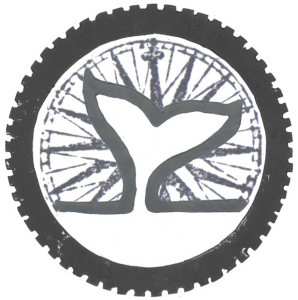Whilst waiting on new tyres, I spent almost a week in Newport and could hear the barking of sea lions almost everywhere I went. Camping in the forest at South Beach State Park, between the highway and the sea, the sound of the sea lions reached me over the rush of traffic and the roar of the surf. It was a few days before I visited them at the docks on the north side of the bay where they entertain daily crowds with their shouts and squabbles.


Yaquina lighthouse, on a headland to the north of the bay, was the wind-blasted scene of a chilly wedding shoot and some skateboarding practise. With the sea cloaked in white caps and the wind making my eyes water, I didn’t spend too long looking for whales. Instead, a flight of stone steps took me down to a sheltered beach with rock pools filled with slime-green anemones, spiny purple sea urchins and dark red starfish delicately laced with white. It was tempting to stay and search for further treasures but the sun was sinking and the park would soon close.


The South Beach area of Newport, south of the bridge, is a hive of marine biology research and the site of Oregon State University’s Hatfield Marine Science Centre. There, the Geospatial Ecology of Marine Megafauna (GEMM) Lab, headed by Assistant Professor Leigh Torres, is studying the foraging ecology, body condition, hormone levels and behaviours of the local gray whales under different environmental, ocean noise and prey conditions. It was fascinating to hear more about this work from Prof. Torres and to chat gray whales with Dr. Bruce Mate and Masters student Clara Bird (hopefully more details to follow soon).


Not far from Hatfield Marine Science Centre is Newport Aquarium, where I passed a drizzly afternoon watching sea otters. After being hunted almost to extinction for their fur, sea otter numbers have increased both to the north and to the south but not yet in Oregon. There’ve been a few sightings though, a sea otter recovery could still occur. A recent blog post from the GEMM lab discusses the possible role of otters in combating the dramatic ecosystem shift from productive kelp forests to purple sea urchin barrens that has been observed in northern California following an increase in sea surface temperature and reduced urchin predation as a result of sea star wasting disease. Some areas of southern Oregon have also experienced recent losses of kelp forests and a resurgence of the marine heatwave of 2014 — nicknamed The Blob — makes these matters all the more urgent. In the meantime, I’ll need to wait until California to see sea otters in the wild.


With sunny days and chilly nights, and an abundance of sea life and cafes, Newport was an excellent place to pass some time. Now, with new tyres fitted, I’m excited to be on the move again.


